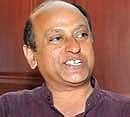
Apart from being a complete volte face from the earlier stand that the polluter should pay, it also raised questions about how India would implement such a commitment. Nandini Chandrashekar of Sunday Spotlight speaks to Dr K N Ninan, Head of Centre for Ecological Sciences at Institute of Social and Economic Change, Bangalore about the repercussions.
How do you think the Minister arrived at this magic number of 20-25 per cent voluntary cuts?
Actually nobody knows how he (Minister) has arrived at this figure of 20-25 per cent or which sectors are going to contribute to this reduction. That is going to be really difficult target for us to achieve. He has not been able to say if the cut is across the board and if it is, then how are we going to go about it. Of course people are very critical about that because it is a voluntary cut without getting anything in return, so nobody knows which sector is going to contribute to this cut. India accepting binding emission cuts is not politically feasible and the government will face a question of credibility. Which is why, Ramesh had to face not the environmentalists and NGOs but also the scientific community.
What exactly does carbon intensity mean and what kind of an impact will the cuts have on Indian growth?
Carbon intensity is measured in terms of carbon emissions per unit of the GDP. The idea is to shift to activities that emit less carbon but in India’s case that is going to be difficult. If you saw the PM’s statement, he said that we need infrastructure growth, which means that we need energy and a lot of our energy is coal based. Most of our coal reserves is low grade, the imported coals are clean but expensive. Our energy production is fossil fuel based, so for quite some time we will be emitting carbon and it is going to be a challenging task to reduce.
Are the alternatives to fossil fuel based power viable for the rate of growth that we would like?
We need a consistent growth rate of 8-10% growth if we have to eliminate poverty and this means that energy production also has to keep pace with the growth.
We say nuclear energy is clean, but even if we implement all the forseen nuclear projects it will still be very small percentage of our energy needs. The experts have clearly stated that and renewable energies like wind power has not taken off. We have solar energy which is prohibitive. It is a very difficult task. At the present stage of development, we have to rely largely on fossil fuels. Clean technology will be prohibitive for India to buy, that is why we are asking the International community to finance it, but so far, even the EU has not kept its promise.
What does the scientific community feel the repercussions would be?
If the promised cuts are not implemented, we may be caught in it. Just like the WTO subsidies, we are asked to reduce subsidies, but they (developed countries) give it in different forms and offer protectionism. That will happen in this instance too. We are apprehensive and there is a fear among the experts and the public that India might break away from G77 and support the developed countries especially US and EU. That will question our credibility as we have always been with G77. India will lose its position of leadership in G77 because many of the countries are looking at India to defend their interests and rights, including the African countries.

